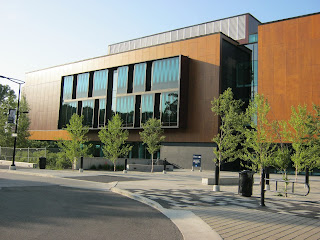 |
| Instructional Centre |
My plan is to use Python instead of Java next year for grade 12. I may even use it for both grade 11 and grade 12. The only downside is GUI programming isn't so easy like with Visual Basic or Delphi! I've been working through some exercises and this excellent (short tutorial) Byte of Python. There are really a ton of free resources out there (textbooks, game programming books, software). I used Portable Python 2.7 and 3.2 at the UTM event. It includes PyScripter IDE which I now prefer to Eclipse (less overhead). Python has a lot of neat features that make problem solving rather than the language the focus. I would have to say HTML5/Javascript is not so much in that same design mode!
In the past, I always thought using 2 languages (Basic in grade 11, Pascal then Java in grade 12) was a good idea. Now I am thinking I'll use Python in both grade 11 and grade 12. Hopefully, by grade 12, we can deal with more interesting (complex, thoughtful) problems and near the end of the class, introduce HTML5 / Javascript for event driven programming. When I first started event driven programming with VB and Delphi, it took some getting use to compared to the console-type programming I was used to. It seemed like an extra layer of complexity. Python with a good IDE (Pyscripter) is very responsive (like QBasic in the past). I noticed virtually nobody used Netbeans or Eclipse as their Java IDE because it was too much. Some used BlueJ, others DrJava and I think that was probably a better choice (I've been using Netbeans).
 |
| UTM Library |












